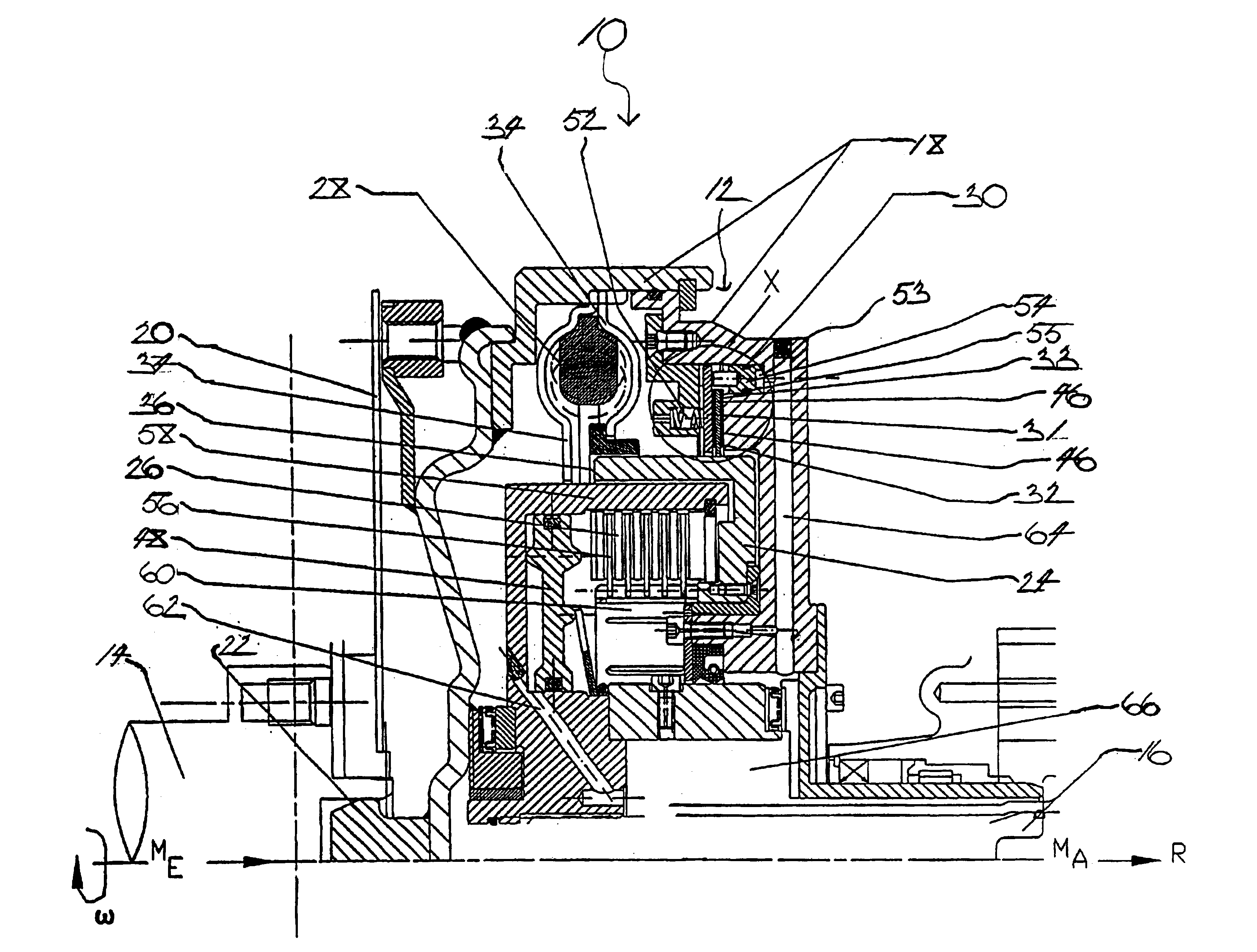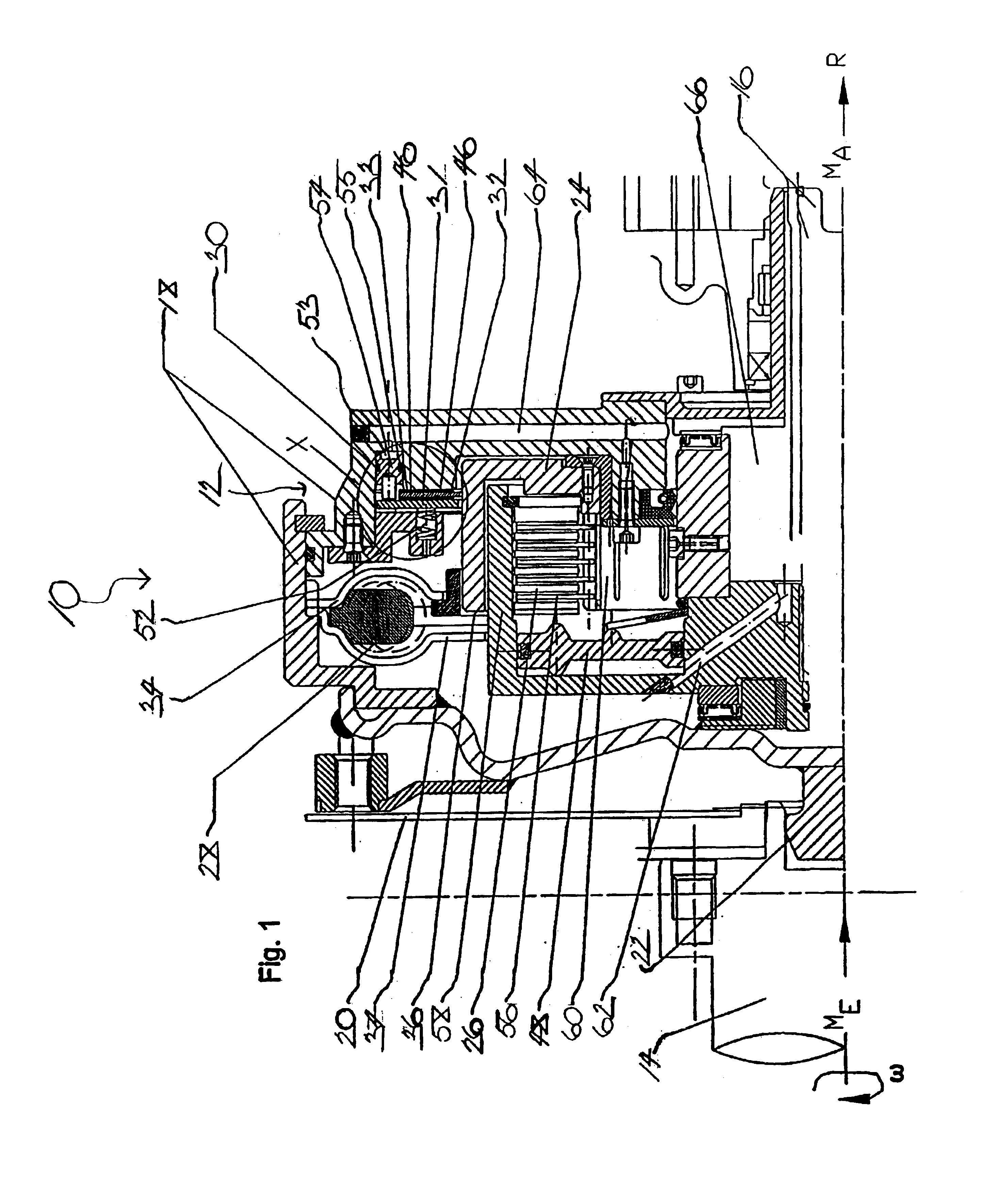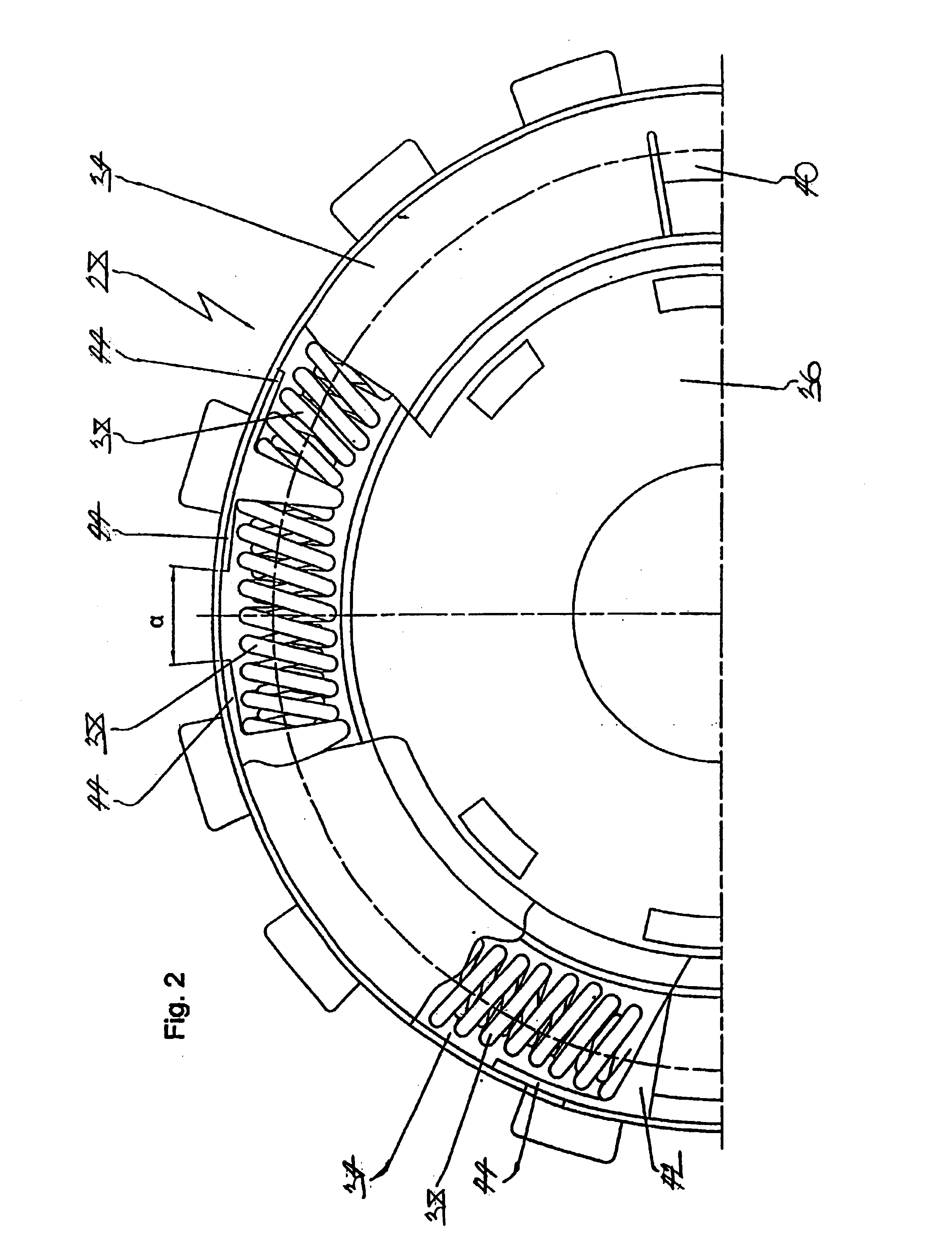Torsional-vibration damper
- Summary
- Abstract
- Description
- Claims
- Application Information
AI Technical Summary
Benefits of technology
Problems solved by technology
Method used
Image
Examples
first embodiment
[0028]Referring now to FIGS. 1 through 4b, where like numerals are used to designate like structure, a section of a first exemplary drivetrain of a motor vehicle is generally indicated at 10 in FIG. 1 and illustrates a possible basic structure and functional method of the torsional-vibration damper of the present invention, generally indicated at 12. In general, a flange 14—coupled to, for example, an internal-combustion engine, a motor, or the like—represents the driving side of the drive train 10. A shaft 16—coupled to, for example, a transmission (not shown) or the like—represents the power-take-off side of the drive train 10. The torsional-vibration damper 12 is disposed between the driving side and the power-take-off side and, thus, the flange 14 and the shaft 16. Consequently, a torque “ME” introduced on the driving side by rotational speed “ω” via the flange 14 can be transmitted via the torsional-vibration damper 12 to the shaft 16 and, thus, to the power-take-off side. The ...
second embodiment
[0051]Referring now to FIG. 5, where like numerals increased by 100 are used to designate structure like that of FIGS. 1-3b, a section of a second exemplary drivetrain of a motor vehicle is generally indicated at 110 and illustrates a possible basic structure and functional method of a torsional-vibration damper of the present invention, generally indicated at 112. In general, a flange 114 represents the driving side of the drive train 110 and is operatively coupled to, for example, an internal-combustion engine, a motor, or the like. A shaft 116 represents the power-take-off side of the drive train 110 and is operatively coupled to, for example, a transmission (not shown) or the like. The torsional-vibration damper 112 is disposed between the driving side and the power-take-off side and, thus, the flange 114 and the shaft 116. Consequently, a torque “ME” introduced on the driving side by rotational speed “ω” via the flange 114 can be transmitted via the torsional-vibration damper 1...
third embodiment
[0066]the torsional-vibration damper 212 generally includes at least one primary element 218 and a secondary element 224. A spring device, generally indicated at 228, is adapted to couple the at least one primary element 218 and the secondary element 224 to each other. The at least one primary element 218 and the secondary element 224 are limited in movement in relation to each other about a rotational axis indicated by the reference “R.” A friction device, generally indicated at 230, is adapted to bring the at least one primary element 218 and the secondary element 224 into frictional contact with each other and includes at least two friction-surface-carrying elements 231, 232, 233 rubbing against each other. A force-generating device, generally indicated at 251, is adapted to generate a contact-pressure force to be applied to the at least two elements 231, 232, 233 to produce a frictional engagement therebetween. The force-generating device 251 includes a mechanical actuating mech...
PUM
 Login to View More
Login to View More Abstract
Description
Claims
Application Information
 Login to View More
Login to View More - R&D
- Intellectual Property
- Life Sciences
- Materials
- Tech Scout
- Unparalleled Data Quality
- Higher Quality Content
- 60% Fewer Hallucinations
Browse by: Latest US Patents, China's latest patents, Technical Efficacy Thesaurus, Application Domain, Technology Topic, Popular Technical Reports.
© 2025 PatSnap. All rights reserved.Legal|Privacy policy|Modern Slavery Act Transparency Statement|Sitemap|About US| Contact US: help@patsnap.com



